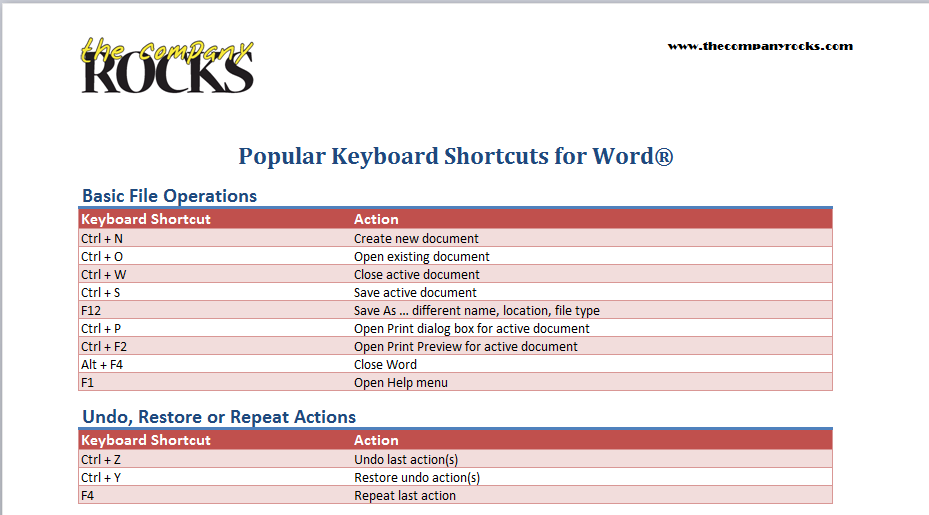I am pleased to make available to you – at no charge – my new chart of “Popular Keyboard Shortcuts for Word.”
Click on the link to download my chart of Word Keyboard Shortcuts as a PDF file. CR – Chart of Word Keyboard Shortcuts
I have organized the keyboard shortcuts into these categories:
Keyboard Shortcuts for Word
- Basic File Operations
- Undo, Restore or Repeat Actions
- Move the Cursor
- Select Words, Lines and Paragraphs
- Use F8 Key in Selection Mode
- Cut, Copy and Paste Selection
- Delete Text and Graphics
- Apply Formatting to Characters and Words
- Find, Replace and Go To Text, Formatting and Document Location
- Format Paragraphs
- Insert Fields and Special Characters
- Navigate in Word Table
- Work in Outline View
- Apply Styles
- Switch Document Views
- Review Documents and Create References
I took care to select and organize , what I feel are, the most popular keyboard shortcuts to use when working in all versions of Microsoft Word. Many people prefer to work without the mouse – keeping their hands on the keyboard. Most people, use a combination of mouse clicks and keyboard shortcuts when writing, editing and formatting their Word documents. Regardless of your experience working with Word, I think that you will discover one or two keyboard shortcuts that you were not familiar with.
I am always delighted to hear from my readers. Do you have a favorite keyboard shortcut? If so, what is it? Please add your comments below to share your experiences with all of my readers.
My Chart of Popular Keyboard Shortcuts for Excel
Earlier this year, I published a chart of the most popular keyboard shortcuts for Excel. Follow this link to download this chart – at no charge – as a PDF file. CR – Updated Chart of Popular Excel Keyboard Shortcuts
Download My Free 50 Minute Video Lesson for Excel Keyboard Shortcuts
I am pleased to announce that – when you click this link – you can get information on how to download my free “extended length” video recording where I demonstrate how and when to use Keyboard Shortcuts in Excel.


